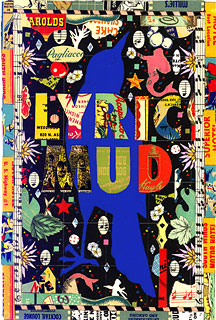All of a sudden, you have it: a beautiful idea! It comes to you full blown and shimmery. Perhaps something brand new you’ve never before conceived, or perhaps the result of pondering long and hard. Regardless, there it is: exciting, and full of energy. Your idea can do no wrong. The world is its oyster. It is your helium balloon.
Ideation. What a great place to be.
You, and perhaps a happy gang of fellow-ideators, begin to bring this effervescent, brilliant idea into being. Plans are drawn, schemes concocted, url’s purchased and celebrations forseen. It’s all a giddy whirl.
Until the obstacles start to arrive. Perhaps not with the first obstacle, or the second, or the third. But eventually it happens: something comes up and you don’t know if you can get around it. As sure as ideas are born, obstacles come in their wake. It is like a natural law.
In the move from ideation to implementation or execution, the emergence of obstacles can tell us many things. It can be a reality check, or a good moment for redirection. A serious obstacle has the power to derail the entire scheme. Most people, I think, realize that when ideas hit the real world, they are reshaped, and sometimes with difficulty.
But how do we respond when it happens? Think especially of group endeavors. How do different personalities react to the emergence of a serious obstacle to implementation? Can you think of a time when someone has thrown up their hands and said: “At last! Now the real story has begun!”
That’s what the narrative arts have to show us. If we look at the implementation phase through the lens of narrative structure, we can see how stories don’t really get started until the first big whammy. There’s even a term for it: the inciting event. Anything before the inciting event (also sometimes known as the first plot point), is merely background, setting the stage. The action does not really begin to elucidate meaning within the framework of the story, until something unexpected shows up.
The arrival of obstacles which appear to thwart our plans does not necessarily mean that the idea wasn’t solid or real enough for the real world. In fact, it might be just the opposite. The natural pairing of idea and obstacle, story and inciting event, can give us energy for the next phase: the rising action.
I’ll be exploring other narrative structural elements in later posts. I’ll also be giving a workshop on the use of the narrative arts in effective implementation for the European Conference on Creativity and Innovation, in Brussels in late October. And, as befits the theme, I’ve been noticing that since I had the idea for the workshop…well, let’s just say that I’ve been keeping good company with some of my favorite obstacles. But more on that to come…










I see this manifest in any lengthy piece of writing I attempt. It’s a daunting thing, especially if you’re working on something like a novel, because if you don’t have the proper momentum built up you could find yourself dozens of thousands of words into something with no true idea of where it could go.
I find myself here far more often than I should.
Robert, oh have I been there! I highly recommend Writing for Story by Jon Franklin. The book purports to be for non-fiction, but the techniques are constructed in a way that I think it could be very useful in fiction writing as well, as a lot of it is based on how to structure scenes. The tips on writing a 25-word outline alone are worth the price of the book. I found myself clinging to those outlines as I made my way through my manuscript draft, and they have made the task of revising a long piece of writing much, much easier. Good luck! –Amy